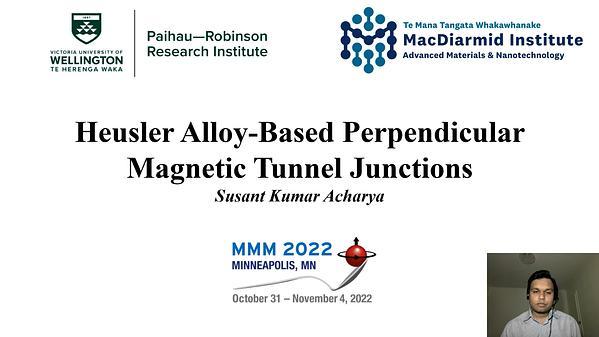Would you like to see your presentation here, made available to a global audience of researchers?
Add your own presentation or have us affordably record your next conference.
Rare-earth magnets may provide useful magnetic properties for quantum technologies, including quantum transduction and quantum memories. Here we calculate the band structure of magnons in ferromagnetic Er2O3. Erbium, in the +3 state in this material, has 11 electrons in a 4f shell which are shielded from the surroundings by valence electrons. The localization of these 4f electrons around the ion core results in long coherence times that make Er2O3 a viable candidate for emerging technologies and devices such as quantum memories, single photon emitters and transduction 1.
We consider fully saturated Er2O3 as a ferromagnetic insulator that hosts magnons and approximate the interaction of the spins as magnetic dipole-dipole interaction. Similar models will describe other dipole-dipole interactions spins, such as ensembles of molecular spins. The Holstein-Primakoff representation is employed to quantize the Hamiltonian. Er2O3 has 32 erbium atoms in a non-primitive cubic unit cell. The long-range nature of magnetic dipole-dipole interaction poses a challenging issue for considering magnonic structure from dipole-dipole interactions. The dipole-dipole interaction drops as a cube power of the separation between spins, thus the strength of the coupling of the 30th nearest neighbor is 4.3% of the first nearest neighbor while the number of neighbors increases. If these long-distance neighbors are ignored the magnonic dispersion will drastically change. We will describe approaches to reach convergence in the magnon dispersion for such long-range interactions.
This work was supported as part of the Center for Molecular Quantum Transduction, an Energy Frontier Research Center funded by the U.S. Department of Energy, Office of Science, Basic Energy Sciences, under Award Number DE-SC0021314.
References
1 Zhong, Tian and Goldner, Philippe. "Emerging rare-earth doped material platforms for quantum nanophotonics" Nanophotonics, vol. 8, no. 11, 2019, pp. 2003-2015.
